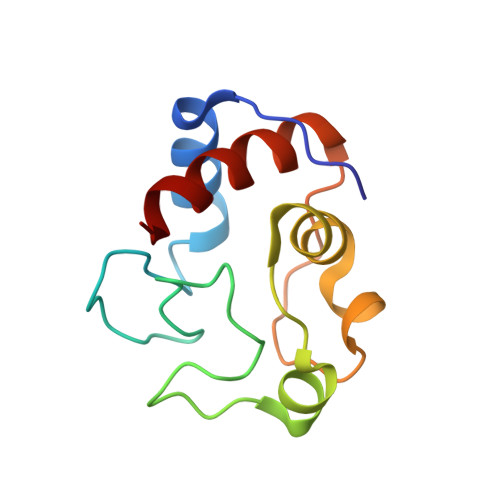Noncovalent PEGylation via Sulfonatocalix[4]arene-A Crystallographic Proof.
Mummidivarapu, V.V.S., Rennie, M.L., Doolan, A.M., Crowley, P.B.(2018) Bioconjug Chem 29: 3999-4003
- PubMed: 30445810
- DOI: https://doi.org/10.1021/acs.bioconjchem.8b00769
- Primary Citation of Related Structures:
6EGY, 6EGZ - PubMed Abstract:
Noncovalent or supramolecular PEGylation, in combination with the site of administration, has great potential to increase the half-life of therapeutic proteins. To date, a variety of noncovalent PEGylation strategies have been devised. However, questions remain concerning the nature of the protein-PEG interaction. Here, we report structural analyses of a model system that comprised the lysine-rich cytochrome c and two PEGylated variants of sulfonatocalix[4]arene. Complex formation was characterized in solution by NMR spectroscopy. It was found that mono- or di-PEGylated sulfonatocalix[4]arene bound the protein similar to the parent calixarene. X-ray crystal structures at <2.7 Å resolution of the PEGylated derivatives in complex with cytochrome c revealed that the PEG chains were mostly disordered or encapsulated within the calixarene cavity. These results suggest that there was minimal interaction between the PEG and the protein surface, providing further evidence in favor of PEG maintaining a random coil conformation.
Organizational Affiliation:
School of Chemistry , National University of Ireland Galway , University Road , H91 TK33 , Galway , Ireland.

















